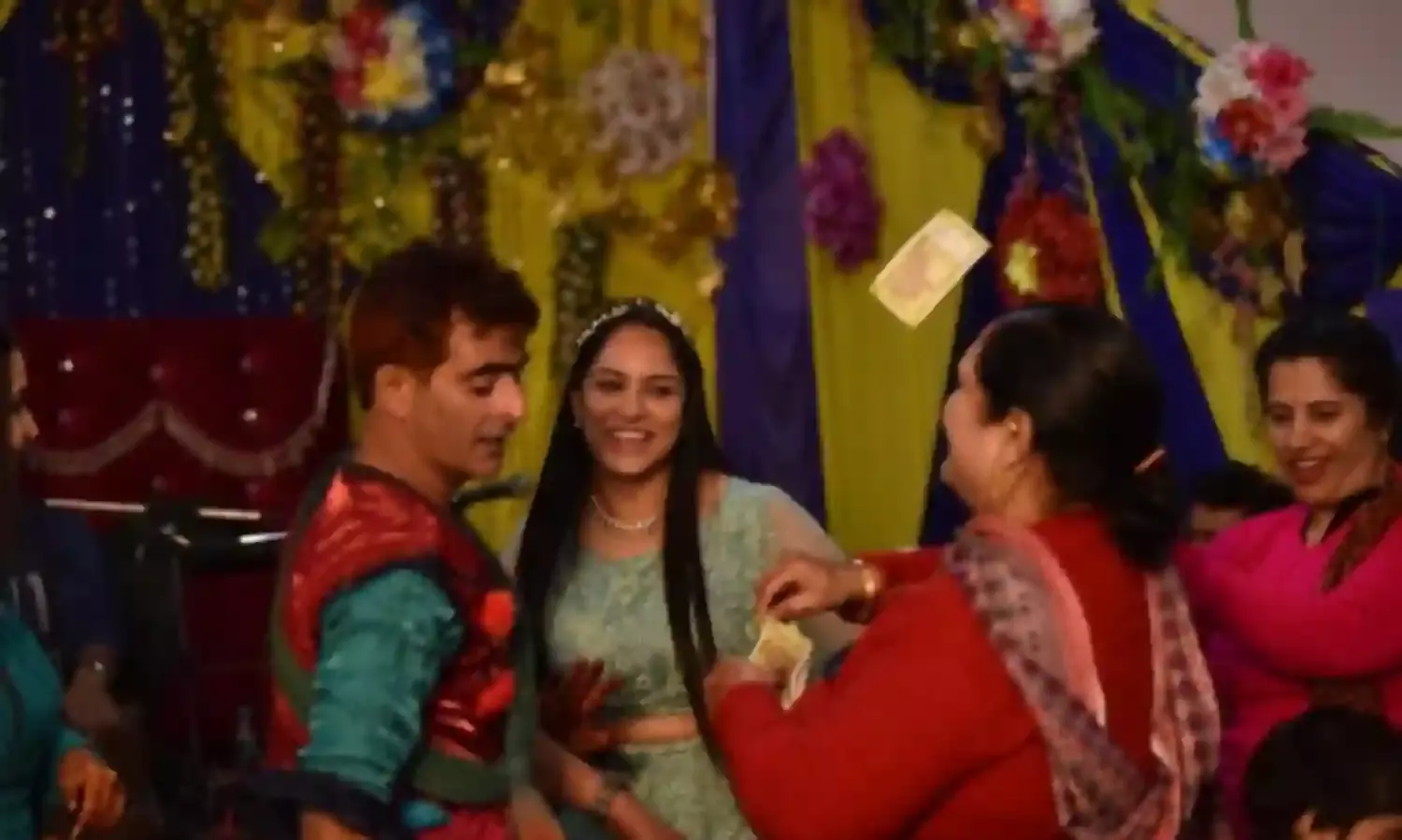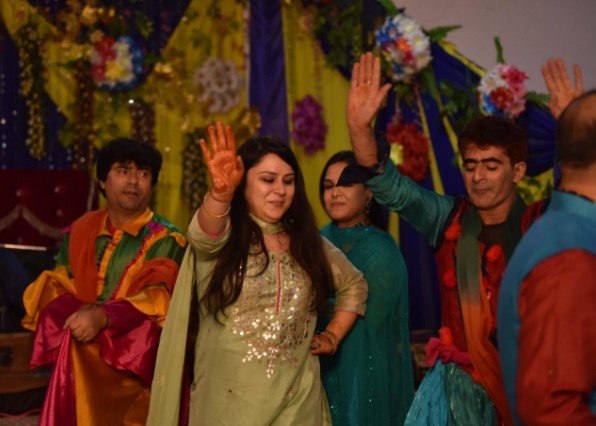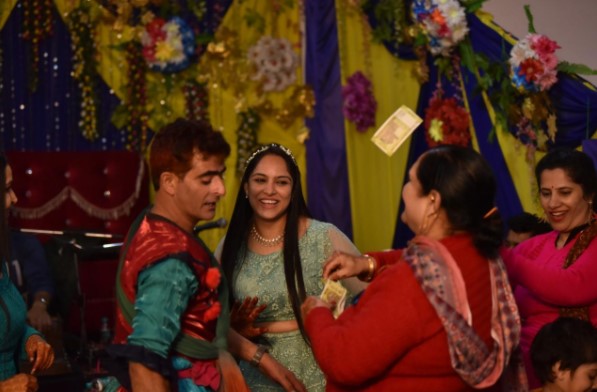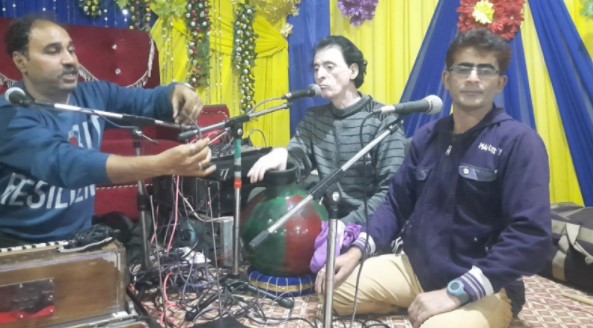Mehndiraat - Both Pandits and Muslims Dance to the Same Folk Songs
The beauty of the Mehndiraat function is that it’s beyond the concept of Religion

Mehndi (henna) is an auspicious element in many weddings. In Kashmir this function is an all-night party, celebrated by both Pandit and Muslim Kashmiris.
Rajinder Raina, a Delhi resident has booked Kashmiri folk singers for his daughter’s wedding in Delhi. “We hired these Kashmiri folk singers for our Mehndiraat function as they represent our centuries-old culture. Many people do prefer DJs over live music but that won’t be our culture, it won’t be a part of us.”
This live music tradition is still alive in wedding functions; lately, it is getting clubbed with DJs to lure the younger generation into attending. As they prefer faster music and beats, these traditional musicians also play a fast number or sing up-tempo to vibe with the crowd.

The function is mostly organized in a wedding hall where a separate enclosure is made for the folk singers. The event starts with applying mehndi (henna) to the palms and feet of the bride and bridegroom; meanwhile, the professional folk singers are tuning their instruments or having a small tea party.
Sheer chai (salted tea), Kashmiri kahwa and Lipton tea are served to the guests and singers through the night. The singers are also offered cigarettes or the traditional hukkah.
The singing group is joined by a bacchakout (a male dancer who dresses like a female). The dancer is seen wearing a long colourful skirt and a top. Bacchakout is the main entertainer of the event who calls and persuades guests to come on stage and dance at the wedding.
The musicians use tumbakhnaari, nott (matka), sarangi and harmonium. Almost all the top professional singers from the valley like Raj Begum, Zoon Begum, Ghulam Hassan Sofi, Ghulam Ahmed Sofi (Amma Kaandhur) Ghulam Nabi Doolwal, Ali Mohd Sheikh, Gopi Nath Bhat (Gupa Bacha) and many more were great Mehndiraat entertainers.

Anil Koul, who has been singing at these weddings for the last 27 years, says “I am living in exile and this music has taken me to my hometown Srinagar for performances.”
“Because of the Pandits migrating from the valley, the cultural heritage is slowly dying in the community and to keep this language and culture alive, these folk-songs are significant”.
For youngsters, Koul has created a piece of fusion music where traditional and hit Bollywood songs are played. His troupe performs across India, and they mix together songs to be relevant to the audience.
The harmony between Kashmiri Pandits and Kashmiri Muslims can be seen in this event when the Kashmiri Muslim artist starts the mehndi function with a Ganesh Vandana.
For them this art is also a source of livelihood. The event also bridges the gap between Kashmiri Pandits and Kashmiri Muslims who have lost their connection after the migration of Pandits.

Mohammad Aslam Kak who hails from Srinagar is the Bacchakout in Koul’s troop.
Kak describes how he was intrigued with music since childhood and is now a professional dancer in Kashmir. He says “Due to militancy many lives have been destroyed and it also affects my livelihood”.
He says he earns less in Kashmir than elsewhere in India because of constant militant attacks and occasional shutdowns.
“Militancy has engulfed Kashmir but not everyone is a militant. Some are artists like us who are just struggling to provide a livelihood to their families” says Kak, emphasizing that militancy has no religion as every Kashmiri community is getting attacked.
He says that even as people identify with different religions, in the end only humans (insaan) are losing their lives.
However, Kak is still optimistic about his livelihood as his profession gives him the opportunity to come out of his hometown and perform across India.
The beauty of the Mehndiraat function is that it’s beyond the concept of Religion. Both Pandits and Muslims sing and dance to the same folk songs.
This is not just a centuries long glimpse of cultural representation. These events provide hope that peace and communal harmony in Kashmir can prevail, and both the communities can live together like they used to before the onset of terror in the valley.



